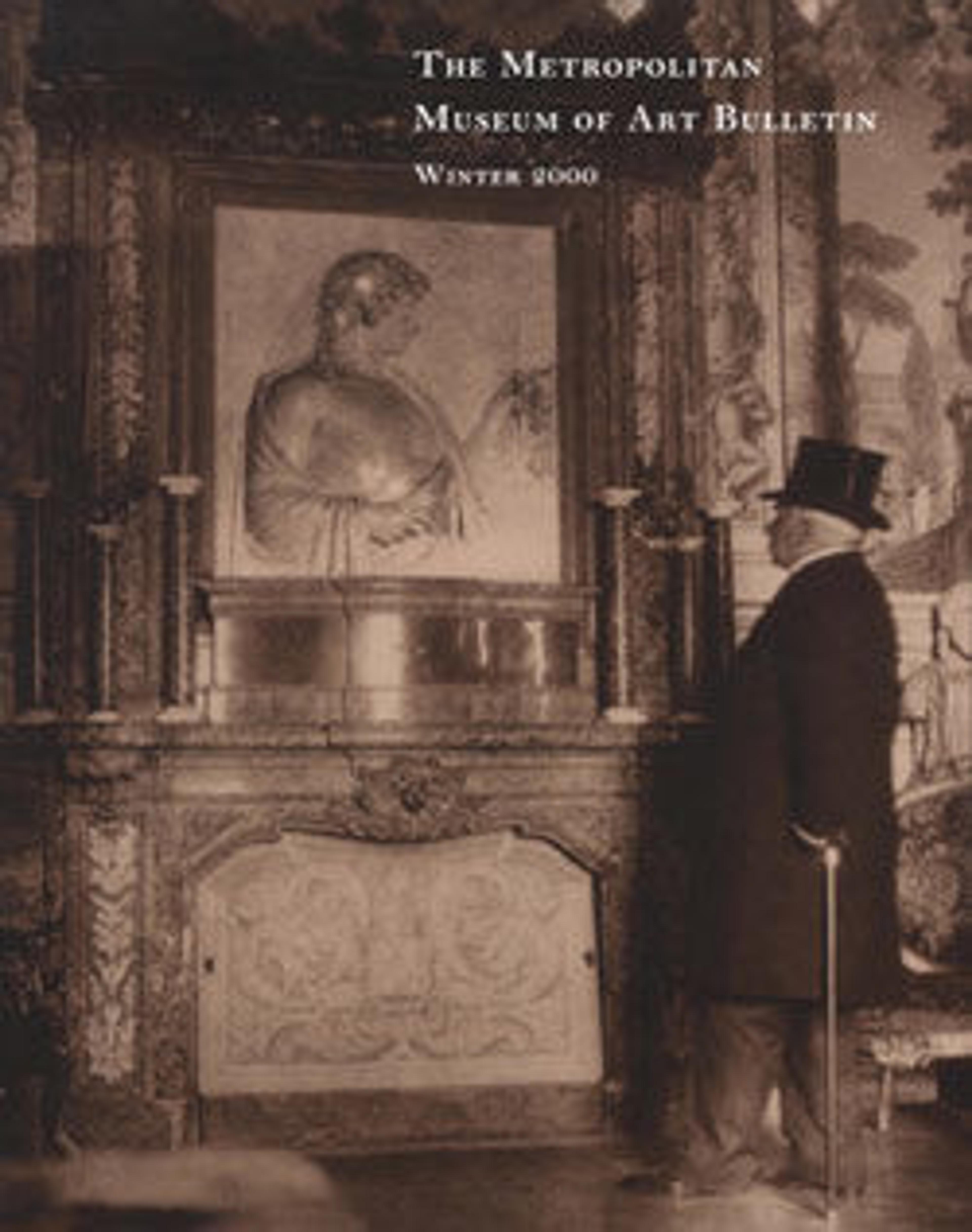Relief from the North Wall of a Chapel of Ramesses I
Displayed in Gallery 129 are reliefs from three walls of the chapel of Ramesses I at Abydos. This monarch came to the throne as an elderly man; this chapel was completed by his son and successor, Seti I.
On the north wall, Ramesses I is depicted as a deceased king who has become divinized and identified with the god Osiris, ruler of the dead. The king is seated, with one hand stretched out toward a small offering table, with piles of food and drink to the right. Above is a list of offerings, now partially lost. This is followed by a long series of spells, originally from the Pyramid Texts (Old Kingdom, ca. 2400 B.C.), designed to ensure that "the mouth of the Son of Re, Ramesses, shall not thirst, nor shall it hunger." The small figures to the lower right perform offering rituals. There would once have been a figure of Seti I leading these rituals; this is now lost. The king's chair rests on a platform whose central support takes the shape of the hieroglyph for "unite," around which two Nile gods tie the symbols of Upper and Lower Egypt (the papyrus and lotus plants). Additional Nile gods bring vases of fresh water symbolizing "life, all happiness, all food, all provisions."
On the north wall, Ramesses I is depicted as a deceased king who has become divinized and identified with the god Osiris, ruler of the dead. The king is seated, with one hand stretched out toward a small offering table, with piles of food and drink to the right. Above is a list of offerings, now partially lost. This is followed by a long series of spells, originally from the Pyramid Texts (Old Kingdom, ca. 2400 B.C.), designed to ensure that "the mouth of the Son of Re, Ramesses, shall not thirst, nor shall it hunger." The small figures to the lower right perform offering rituals. There would once have been a figure of Seti I leading these rituals; this is now lost. The king's chair rests on a platform whose central support takes the shape of the hieroglyph for "unite," around which two Nile gods tie the symbols of Upper and Lower Egypt (the papyrus and lotus plants). Additional Nile gods bring vases of fresh water symbolizing "life, all happiness, all food, all provisions."
Artwork Details
- Title:Relief from the North Wall of a Chapel of Ramesses I
- Period:New Kingdom, Ramesside
- Dynasty:Dynasty 19
- Reign:reign of Seti I
- Date:ca. 1295–1294 B.C.
- Geography:From Egypt, Northern Upper Egypt, Abydos, Temple of Sety I, north of NE corner, Chapel of Ramesses I
- Medium:Limestone
- Dimensions:H. 139.7 × W. 165.1 cm (55 × 65 in.)
- Credit Line:Gift of J. Pierpont Morgan, 1911
- Object Number:11.155.3a
- Curatorial Department: Egyptian Art
More Artwork
Research Resources
The Met provides unparalleled resources for research and welcomes an international community of students and scholars. The Met's Open Access API is where creators and researchers can connect to the The Met collection. Open Access data and public domain images are available for unrestricted commercial and noncommercial use without permission or fee.
To request images under copyright and other restrictions, please use this Image Request form.
Feedback
We continue to research and examine historical and cultural context for objects in The Met collection. If you have comments or questions about this object record, please contact us using the form below. The Museum looks forward to receiving your comments.
